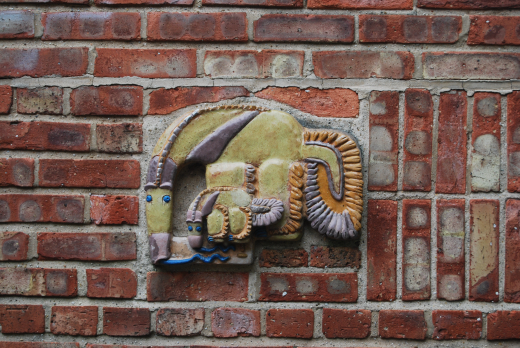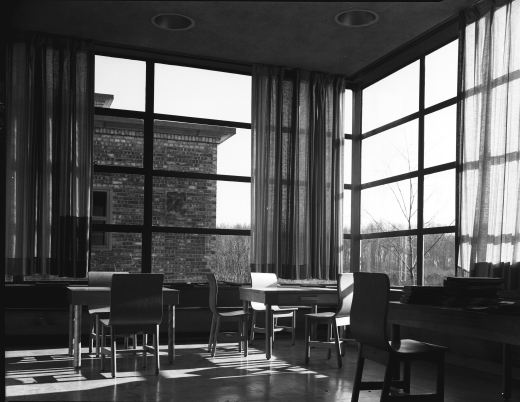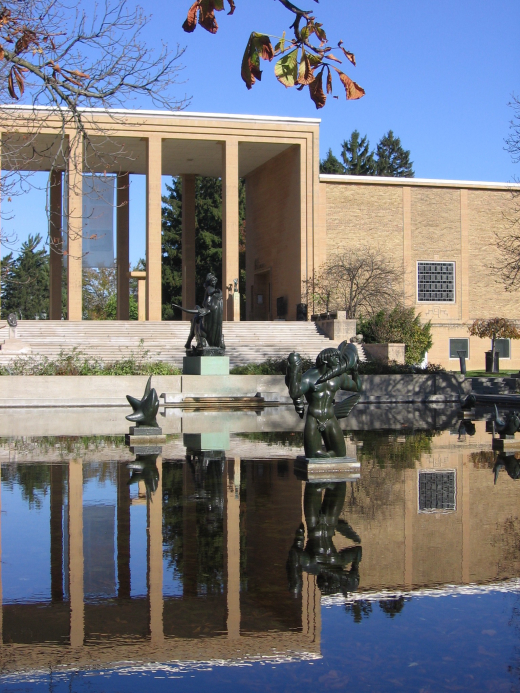In college, I studied ceramics and weaving, illustration and graphics. I knew I didn’t want to be an architect. Too Hard! I was lost. Then one day landscape architecture came into view. I liked to draw. I liked nature and to be outdoors. Perfect! Mine, not someone else’s! I designed gardens for a while. Then we moved and I went to graduate school. It was there that the early lessons on proportion and cadence, value and contrast, color and form came to mind. I had learned so much by osmosis. I hadn’t forgotten. They were all part of my experience. But I had one more important lesson to learn. My professor told me to write a paper for modern landscape history class on a landscape designed by Dan Kiley around a house designed by my father. Oh, no! Dan’s landscapes were too architectural for my taste! The architecture was too close to home!
I studied the house design. I studied the landscape plans. I analyzed the plans as if I were evaluating a grand piece of architecture with columns, not trees, with a roof not canopies. I looked for the Golden Mean, enclosed and open space, traffic patterns and color elements. This plan for the Miller House in Columbus Indiana was amazing! Intricate, simple, elegant, layered, functional, modern and agreeable. It wasn’t cold, or museum-like. It seemed to me to combine the best of what I liked about my grandfather’s house with the best of modernist characteristics. Wow! And at the end of this project I came to know my father and his remarkable contributions to my life a little bit better.
Now, when I approach a new project, the lessons I learned as a child are part of my tool box along with the essential abilities to listen, to understand the objectives and to communicate with a client. But what is it about Modernism that can add to our lives today? Clean simplicity? Fewer objects to clutter our lives, but objects that add beauty to our everyday experience? Light, quiet, responsive, ecologically sound, efficient use of space? I think all of these. What we need is good design solutions before we build, create, construct. In today’s rush to work, promote, exercise, care for family, there is less and less time to contemplate. Good design enhances our lives whether it is a design for the iPhone, the garden, the closet or the kitchen, but we would do better if we would take the time and trouble to plan, design and think first, rather than problem solve when an unanticipated problem arises.
About the Author
Susan Saarinen, daughter of architect Eero Saarinen and sculptor Lily Swann Saarinen, is an artist, designer, and artisan comfortable working in many different media. Susan grew up in the Cranbrook Educational Community, an intensely creative environment where her grandfather Eliel Saarinen was director, sculptor Carl Milles and ceramist Maija Grotell were teachers, and Susan’s godfather Charles Eames, furniture designer Florence Knoll, weaver Jack Lenor Larsen, and metal sculptor and furniture designer Harry Bertoia met and developed their crafts. Profoundly influenced by her early years, she holds degrees in Fine Arts (weaving and ceramics) and Landscape Architecture. Her firm, Saarinen Landscape Architecture, concentrates on environmentally appropriate projects. When she has time, she balances her design practice with fine arts. Saarinen has taught at Harvard, the University of Colorado at Denver, the Art Student’s League of Denver and a cultural exchange center in southwest France. She is presently writing her memoirs.
Credits
1 Designed by Albert Kahn, and Bertram Goodhue Associates, respectively.






